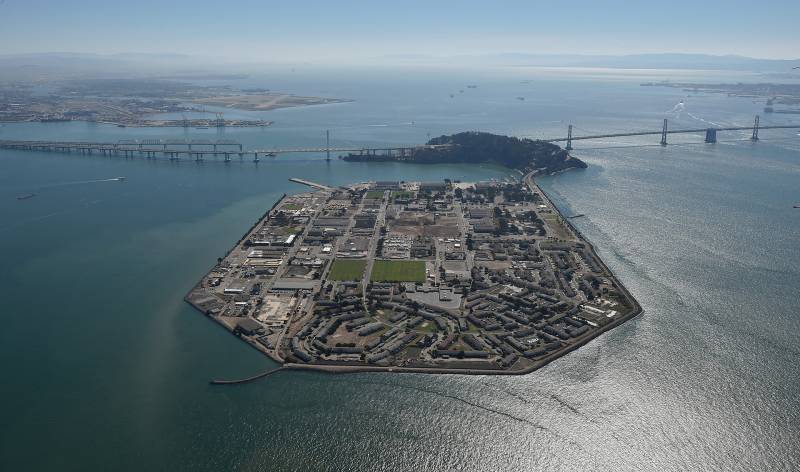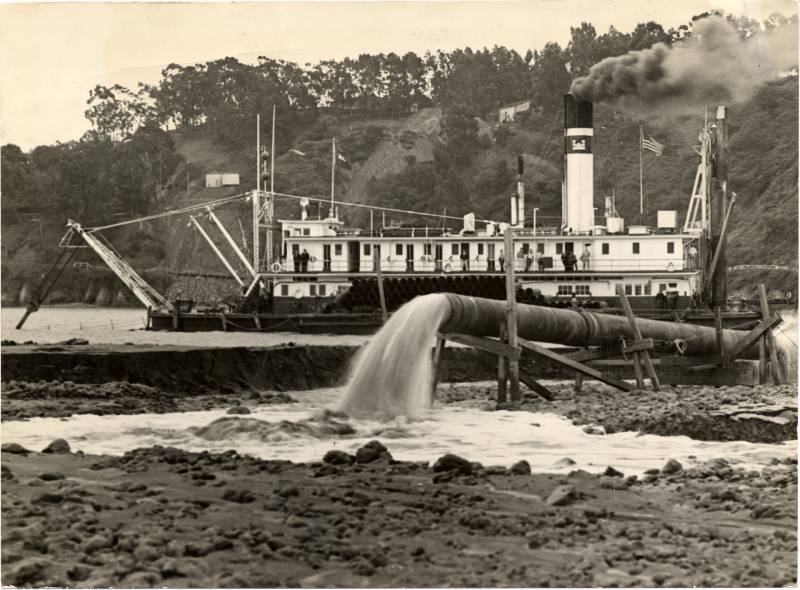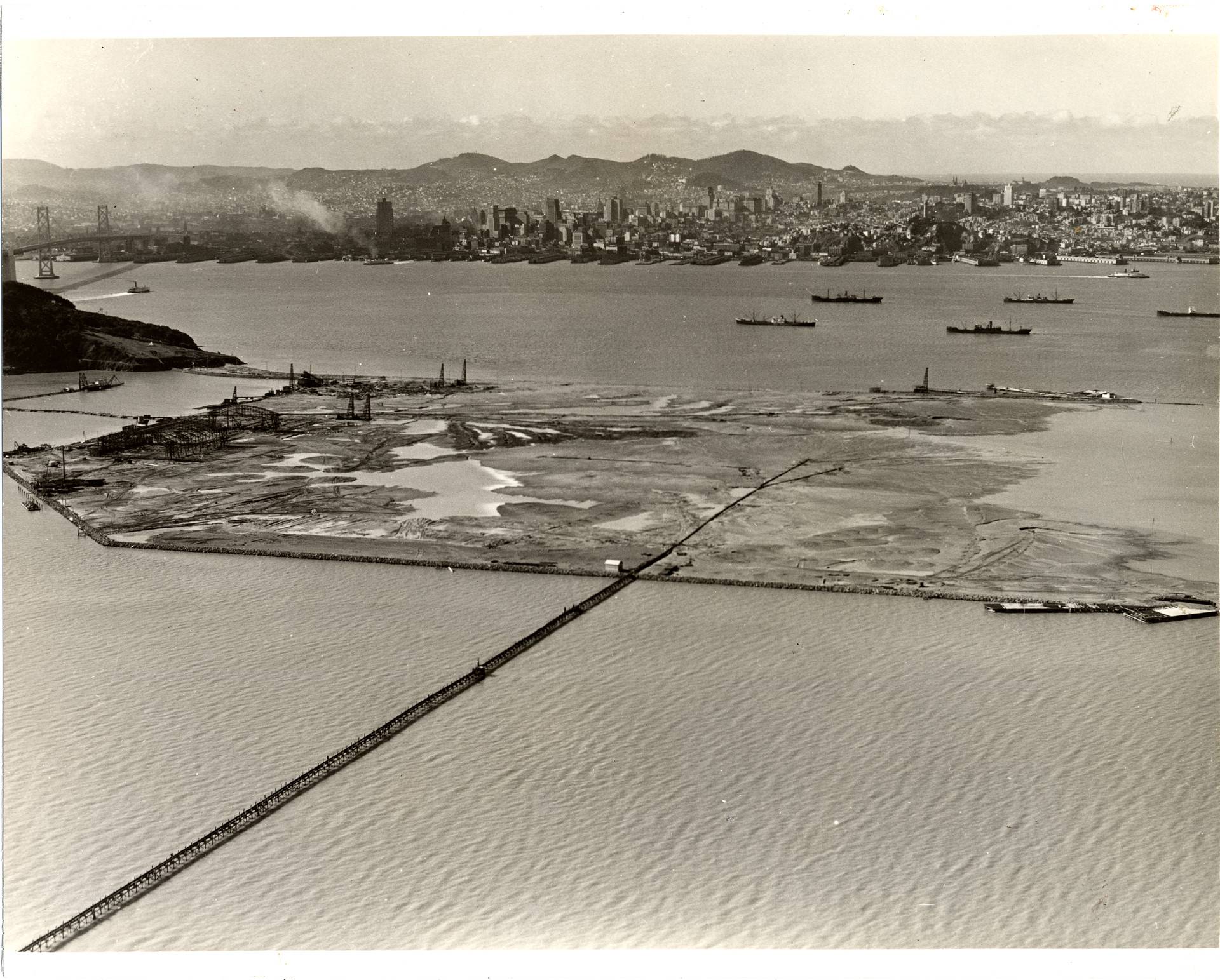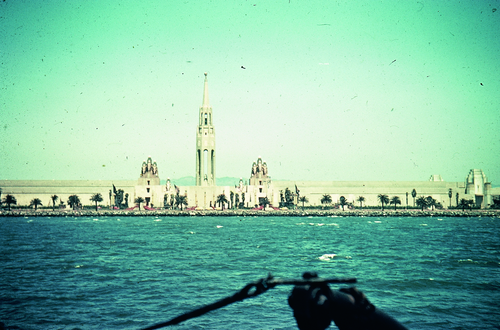This is part 1 of a two-part series on Treasure Island. Part 2 explores the future of Treasure Island.
H
ave you ever visited Treasure Island? The low-lying island that humans made from mud and rock on a shoal in the middle of San Francisco Bay?
Bay Curious listener Gary Pilgram stopped there during a romantic drive across the Bay Bridge with his wife. Enchanted by the panoramic view of the Bay Area, Gary wondered: What’s the island’s past?

Origin Story
In the 1930s, passenger flights were gaining popularity, and San Francisco’s airfield, Mills Field, couldn’t accommodate the demand. The city needed space for a larger airport and was on the hunt for land.
At the same time, engineers were almost done building both the Bay Bridge and the Golden Gate Bridge, which would open within a year of each other. The city wanted to celebrate these engineering marvels with a big world’s fair.
They had held two fairs before: the California Midwinter International Exposition of 1894 in Golden Gate Park and the Panama-Pacific International Exposition in 1915.
Both fairs were successful, says Anne Schnoebelen, historian and member of the Treasure Island Museum’s board of directors. Leaders were ready to host another as the city emerged from the Great Depression.
“City leaders said, ‘We know how to do a world’s fair. This depression isn’t going to last forever, we need something to look forward to. Let’s have a new world’s fair in San Francisco. What do you know? They decided they wanted to do it on Yerba Buena shoals,” Schnoebelen says.
Federal Money
Of course, San Francisco needed money to build the island. City leaders pitched President Franklin Roosevelt on the idea.
“FDR really loved the idea of an airport and was agreeable to the idea of a world’s fair,” she says. “The federal government provided quite a bit of money to build the island.”
The Army Corps of Engineers piled hundreds of thousands of tons of boulders onto the the shoals north of Yerba Buena Island. They dug up the equivalent of 2½ million dump trucks of bay mud and sand, dumping the muck inside the boulder dam.

All the while, the president’s focus was on World War II.
“The military development of the Bay Area was a very big thing in the ’30s,” Schnoebelen says. “And Treasure Island was part of that big buildup.”
While city leaders focused on the fair, she says that FDR wanted to make sure the island had a submarine turning basin.
From the beginning, Treasure Island was the site of a tension between something romantic — a world’s fair to celebrate the city’s achievements — and the powerful, overwhelming force of World War II.
The Fair
The Golden Gate International Exposition opened Feb. 18, 1939.
“People were so excited that the fair’s promoters cautioned people, saying, ‘Well, you better not come on opening day. It’s going to be too busy,’ ” Schnoebelen says.
On the first day, more than 150,000 people descended on Treasure Island. California’s governor opened the gates with a jewel-encrusted key, reportedly worth $35,000.


